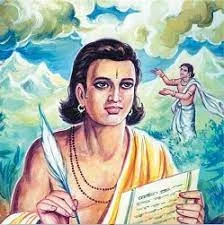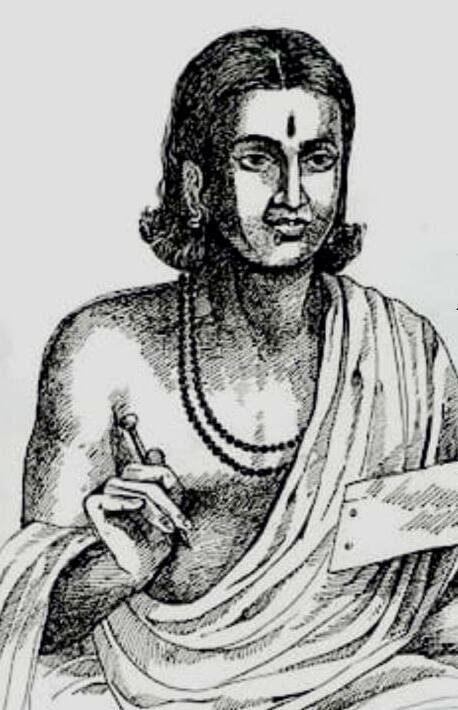Shakespeare of India: A Legacy of Literature
The title “Shakespeare of India” is often attributed to Kalidasa, one of the greatest poets and dramatists of classical Sanskrit literature. Kalidasa’s remarkable works have earned him a place among the most revered figures in Indian literary history. His ability to blend profound themes with natural beauty and deep emotional resonance has made him a symbol of cultural excellence. Known for his mastery of language and intricate poetry, Kalidasa’s influence extends far beyond his time, making him a central figure in India’s literary heritage.
Kalidasa’s contributions are unparalleled, with works like Shakuntala and Meghaduta standing out as masterpieces of classical literature. These works not only showcase his exceptional talent for storytelling but also reflect the deep cultural and philosophical ideals of ancient India. “Shakuntala,” which is often considered his magnum opus, explores themes of love, duty, and destiny, while “Meghaduta” is a poignant expression of longing and separation.
Kalidasa’s Influence on Indian and Global Literature
Kalidasa’s works have had a lasting impact not only on Indian literature but also on global literary traditions. His influence can be seen in a range of adaptations across different cultures, with many renowned authors drawing inspiration from his narratives. His poetic style and dramatization of complex emotions have been admired by literary scholars worldwide. The vibrant imagery and emotional depth in his works continue to resonate with readers, making him an enduring figure in both classical and modern literature.
Moreover, Kalidasa’s ability to intertwine human emotions with nature’s beauty set a benchmark for poets and writers. His works were often seen as an ideal blend of form and content, and they contributed significantly to the development of Sanskrit drama and poetry. His mastery over meter, verse, and lyrical expressions influenced numerous subsequent generations of writers and thinkers in India and beyond.
Kalidasa’s Legacy in Modern Literature
Today, Kalidasa’s legacy lives on through various adaptations in literature, theatre, dance, and cinema. His works are still studied in academic settings, inspiring young scholars and artists alike. Whether through theatrical performances or cinematic interpretations, his timeless stories continue to captivate audiences. In modern India, Kalidasa’s influence is felt across different cultural spheres, from traditional performances to contemporary creative expressions.

Why This News is Important
The Cultural Significance of Kalidasa’s Legacy
Kalidasa’s contributions to literature are pivotal in understanding India’s rich cultural heritage. His works not only reflect the grandeur of ancient Indian civilization but also offer insights into human emotions, societal values, and philosophical ideas. The significance of his legacy is not just academic but also cultural, as it shapes how literature and art are appreciated in contemporary India.
Kalidasa’s portrayal of human emotions through his writing fosters a deeper understanding of the complexities of life. His ability to capture the essence of love, nature, and moral dilemmas resonates even in today’s world. As we recognize and celebrate the legacy of Kalidasa, we acknowledge the foundation he laid for subsequent generations of writers and poets who have expanded and enriched India’s literary landscape.
Kalidasa in the Context of Government Exams
Kalidasa’s work is a part of Indian culture and history, making it relevant for students preparing for various government exams. The study of such figures not only enriches one’s knowledge of literature but also provides a deeper understanding of India’s rich intellectual tradition. For aspirants preparing for civil services or positions in cultural and heritage departments, knowledge of Kalidasa and his works is essential. His contributions to literature and their influence on global cultural exchanges are often part of the curriculum for these exams.
Historical Context: Background of Kalidasa’s Contributions
Kalidasa is believed to have lived during the Gupta Empire, around the 4th-5th century CE, a period often referred to as the “Golden Age of India.” This era was marked by advancements in science, mathematics, art, and literature. The Gupta period’s patronage of the arts allowed great scholars like Kalidasa to flourish and produce works that have been passed down through generations.
Kalidasa’s works were not only significant in their own time but also laid the foundation for future literary developments in India. The Gupta Empire, under the leadership of King Chandragupta II, promoted Sanskrit literature and arts, which allowed Kalidasa’s works to attain recognition. His literary excellence and mastery over Sanskrit poetry marked the culmination of classical Sanskrit literature, making him a towering figure in Indian cultural history.
5 Key Takeaways from “Shakespeare of India”
| No. | Key Takeaway |
|---|---|
| 1 | Kalidasa is referred to as the “Shakespeare of India” due to his monumental influence on literature. |
| 2 | His notable works include Shakuntala and Meghaduta, showcasing themes of love, duty, and nature. |
| 3 | Kalidasa’s literary style blended deep emotional expressions with rich natural imagery, influencing future generations of writers. |
| 4 | His works continue to inspire modern adaptations in literature, theatre, and cinema. |
| 5 | Kalidasa’s legacy is important for understanding Indian culture and history, making him a key figure for government exams. |
Important FAQs for Students from this News
Who is referred to as the “Shakespeare of India”?
Kalidasa, the renowned classical Sanskrit poet and dramatist, is called the “Shakespeare of India” due to his immense influence on Indian literature.
What are Kalidasa’s most famous works?
His most famous works include Shakuntala (a play) and Meghaduta (a lyrical poem).
Why is Kalidasa important for government exams?
Kalidasa’s contributions to literature are integral to understanding India’s cultural and intellectual history, making him relevant for various government exams focused on Indian heritage and literature.
What period did Kalidasa live in?
Kalidasa is believed to have lived during the Gupta period, around the 4th-5th century CE.
How did Kalidasa impact world literature?
Kalidasa’s poetic mastery and thematic depth influenced not only Indian literature but also inspired many global authors and scholars.
Some Important Current Affairs Links


















 Exciting News!
Exciting News!  Join Our Telegram Channel Now!
Join Our Telegram Channel Now!
 Join our Telegram channel for a thrilling adventure into the world of daily current affairs.
Join our Telegram channel for a thrilling adventure into the world of daily current affairs. 
 Don’t miss out on the latest updates and insights! Click to join now and be part of the knowledge revolution!
Don’t miss out on the latest updates and insights! Click to join now and be part of the knowledge revolution! 
